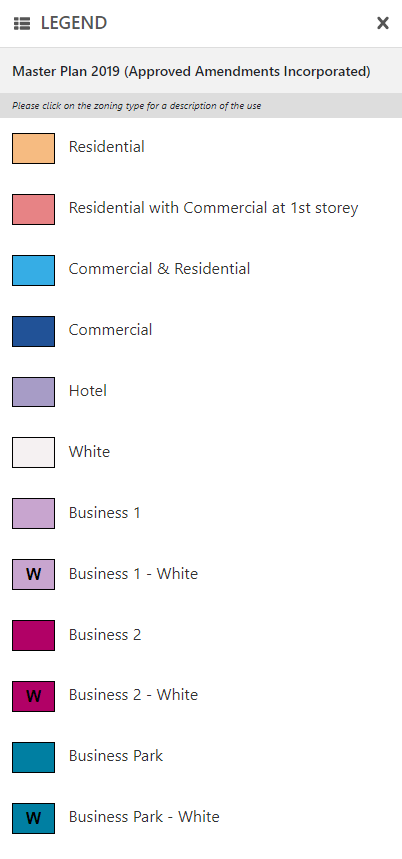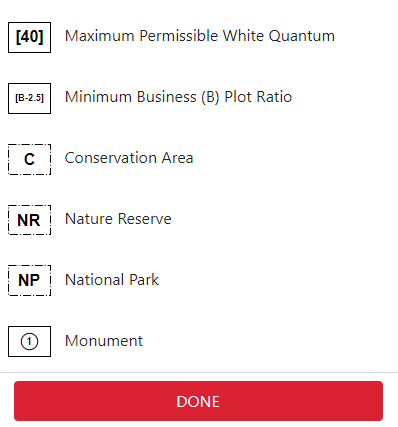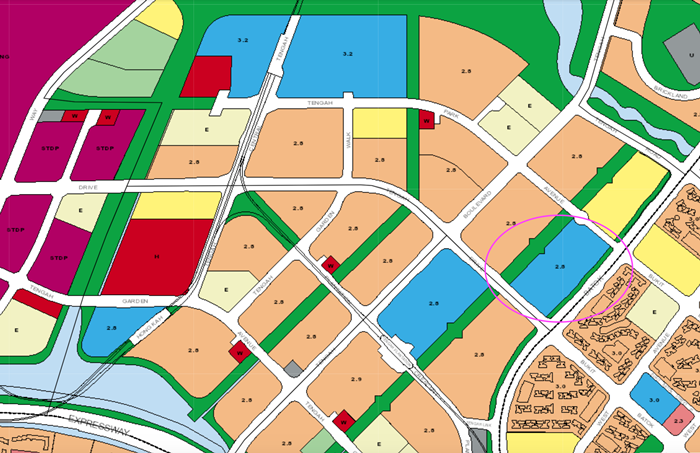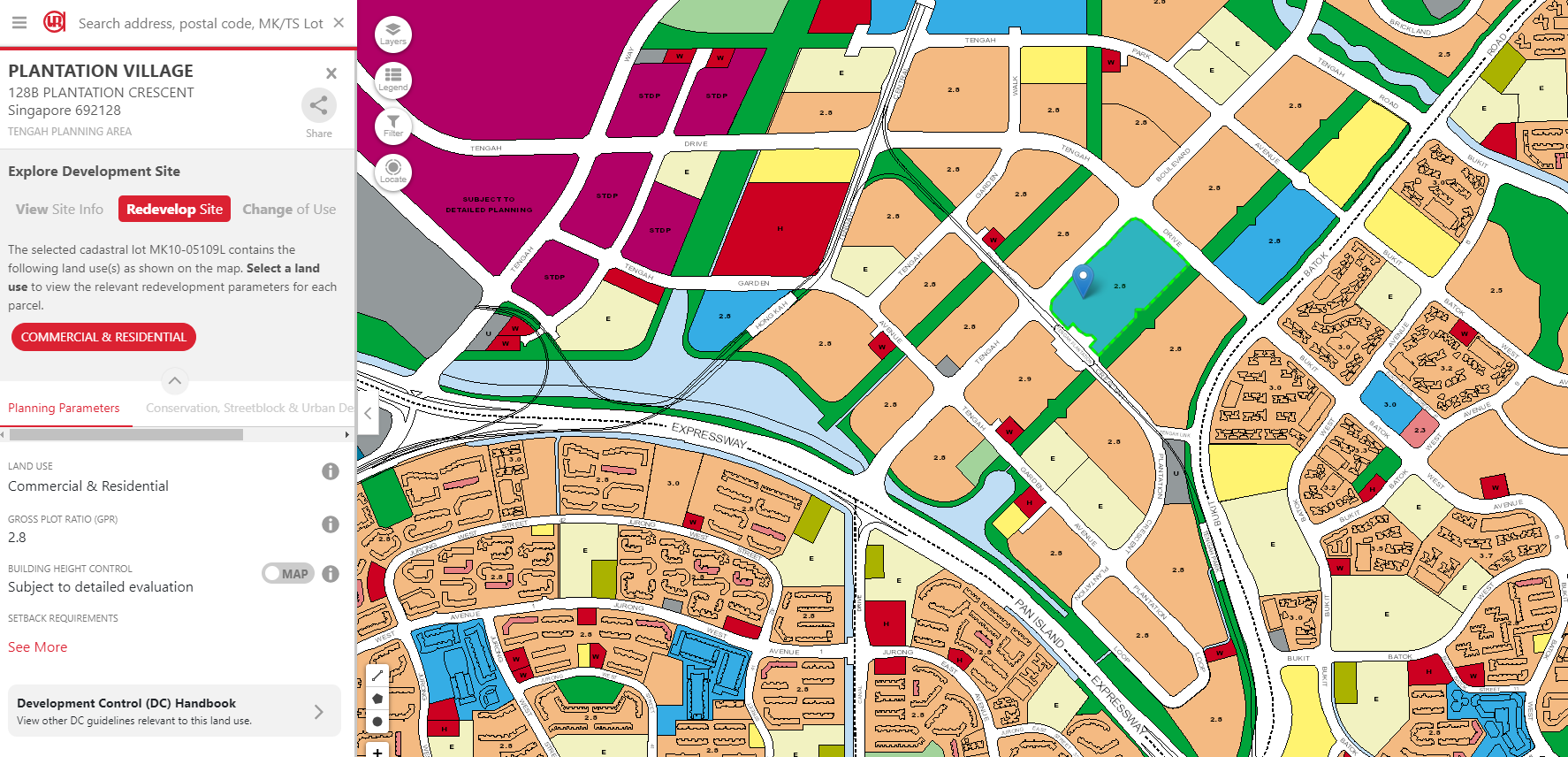
URA Space is a tool you can use to understand the URA Master Plan. Whether you’re a buyer, an upgrader, or an investor, you want to know how to use this essential tool to better understand how land is being used in Singapore.
Simply put, if you have a stake in Singapore property, then consulting the URA Master Plan is pretty much a ‘must read’ as it provides you with the government’s masterplan to develop Singapore in the next few years.
Knowing how the government plans to develop an area ahead of time will give you a competitive advantage. But first, you’ll need to understand how to read it. Here’s a 4 step guide on how to.
What Is the URA Master Plan?
The Urban Redevelopment Authority (URA) defines the URA Master Plan as “a statutory land use plan that guides Singapore’s developments in the medium term over the next 10 to 15 years”. In simple terms, the URA Master Plan is a future roadmap for developments across Singapore up to the next 15 years, laid out bare to you.
Since all land in Singapore is zoned according to its uses (e.g. residential, commercial, transportation, etc.), the Master Plan acts as a semi-blueprint of the country’s development and contains details such as allowable land use and density of developments. It is also reviewed every five years.
By understanding the plan, property buyers hold a ‘crystal ball’ in their hands as they have ‘first-hand’ information on future developments in Singapore. With this ‘crystal ball’, you can get an idea of what future developments may impact the quality of living, and the likely value of a property you are interested in.
We did a comparison between the 2019 URA Master Plan and the previous 2014 iteration, so you can easily see what has changed at a glance.
Using URA Space and Making Sense of the URA Master Plan
Now that we got the basics out of the way, here comes the tricky part: Understanding how to read it. For a newbie who hasn’t been exposed to the URA Master Plan before, it can be quite daunting, especially with all the terms and colour-blocked areas.
If you find it challenging making sense of the URA Master Plan, here’s a handy step-by-step guide to help you.

Image source: URA
Pre-Requisite 1: Learning How to Read the Legend/Colour-Code on URA Space
In order to understand the URA Master Plan, you need to first learn about the meaning behind each colour code on the URA map.
To get the full legend, click on ‘Find Master Plan Zoning’ on the first page. Then click on ‘Legend’, located right beside the main menu to understand what each colour of the colour code stands for. As you move through the map, you can click on the ‘Legend’ button to reference what you’re looking at.

You’ll get redirected to this page after clicking ‘Master Plan 2019’, and then ‘Legend’.
Once you click the button, you can see the following details, which clearly displays the colours and states which ‘zone’ they are representing (as detailed below):




As you can see, each zone is colour-coded according to what the land can be used for. You can also check what each colour represents by looking at the legend. Generally, the key takeaways are these:
|
Legend |
Colour/symbol |
Description |
|
Residential/ Commercial & Residential |
Beige, light blue |
The most important colours you need to know are the beige and blue areas. These areas indicate where there will be property developments for residential homes. |
|
Educational institutions |
Off-white with an ‘E’ inside |
If you have children that are of school-going age (or planning to have children), having a good school nearby can be a big draw. Take note that schools are often quite noisy during recess and dismissal times. |
|
Health and medical care |
Red with an ‘H’ inside |
Areas zoned for healthcare usually mean hospitals, polyclinics, or other developments such as rehabilitation centres or hospices. If you are living with your parents or an elderly family member or friend, staying near a healthcare facility can be vital, especially if they require frequent medical attention. |
|
Transport facilities |
Symbol with lines drawn across, depending on the transport type |
Transport facilities like MRT are one of the factors that have large impacts on the prices of property. HDB blocks that are within walking distance of an MRT usually fetch higher prices than those that are significantly farther away. However, if a unit is too close to the MRT tracks, it can also be a deterrent due to the constant noise. |
|
Commercial & Residential /Commercial (retail, office) |
Light blue, blue and baby blue |
Having a shopping mall or a selection of retail amenities nearby where you live is a very attractive prospect. After all, everyone likes convenience. And it’s one of the ways COVID-19 has changed the way we buy property. |
Pre-Requisite 2: Plot Ratio
Apart from deciphering the land use and its zones, another vital thing to know when you’re exploring areas to purchase property is the plot ratio.
Plot ratio tells you how intensively a plot of land can be used for developments; for example, how likely it is to contain skyscrapers or tall buildings. The plot ratio determines the maximum gross floor area (GFA) of any development on that land parcel. That’s why plot ratios can be a useful indication of potential developments in an area.
If you zoom in on the URA Master Plan via URA Space, you’ll notice that each plot has a number (e.g. 2.9, 3.0, 3.5). This is basically the plot ratio of the parcel of land. The larger the number’s value, the more intensively the land can be used. Meaning to say that a high plot ratio will have more units and more storeys.
If you’re buying a residential project, you could roughly estimate the number of storeys and density based on the plot ratio:
|
Gross plot ratio/density |
Storeys |
|
1.4 (very low density) |
5 |
|
1.6 (low density) |
12 |
|
2.1 (medium density) |
24 |
|
2.8 (high density) |
36 |
|
> 2.8 (very high density) |
>36 |
If two plots of land have similar areas (on the URA Space map), but differing plot ratios, it usually means that one will be denser or taller than the other.
You can look up the maximum allowed height for buildings in certain plots using the search bar. Simply input the address or name or click an area on the map, and then click on ‘Redevelop Site’ and you’ll be able to see the maximum height of the building.

Under the ‘Planning Parameters’ section, you’ll be able to see the maximum height via the ‘Building Height Control’ section.
So why does plot ratio matter? Well, that’s because the plot ratio indicates how tall the buildings will be on the specified plot of land. In other words, if the plot ratio number is high, it’s more likely that the land will have a tall building.
Residential plots with a high plot ratio can mean towering condo blocks while a commercial land area could be a new shopping mall.
Looking at the plot ratio is pivotal as you don’t want to be buying an expensive condo and end up having your view blocked by another condo that is due for development in three years’ time. This can seriously affect your property’s valuation!
What Should I Look Out for In the URA Master Plan Before I Buy A Home?
Step 1: Zoom in on Your Area of Interest
The first most helpful step to know before you use the URA Master Plan is to have an area of interest.
Otherwise, it is akin to exploring the world map to look for a travel destination. You will be overwhelmed with choices and end up with a choice dilemma.
Let’s say you are eyeing a new BTO with your other half. Based on the upcoming BTO projects, you can then select your area of interest. For example, the upcoming developments in Tengah can be viewed when you zoom in to the Tengah town.

Tengah town on the 2019 URA Master Plan

Zoomed-in view of Tengah town and the various plots of land
Step 2: Identify the key features of (and around) your desired plot

Using the URA Master Plan, you can find out that a residential and commercial plot will be released in the upcoming BTO project in Tengah. A residential and commercial plot indicates that it will be a mixed development with the potential of having a mini-shopping area within the neighbourhood.
There might even be a food centre located within the plot that will be very convenient for your food needs. Using the latest update on URA Space, you can overlay different maps onto each other and even change their opacity for a better view.

Tengah Plantation Village commercial shops (Source: HDB)
For example, The commercial shops for Plantation Village (as indicated on the URA Master Plan) will be along the green space in the middle of Plantation Village and Plantation Grove.

Tengah Parc Residence town centre (Source: HDB)
Parc Residence, which was launched in the August 2020 BTO, will also be another mixed development plot (blue area), just like Plantation Village. The BTO project that is just diagonally across Plantation Village will house the neighbourhood centre where you will find shops, community centre and polyclinic under one roof.
Another feature you can identify from the URA Master Plan is that the plot will be one street away from the MRT (Tengah Plantation). From a transport perspective, this plot is very convenient especially once the Jurong Region Line is complete.
For sports lovers, there is also a stadium that is located within the vicinity (on the top right of the image). Not only that, but you can also see that there is a green strip between the plots in Tengah, which indicates a potential park connector. If you are a nature lover, this will definitely help tick more boxes off your checklist.
Step 3: Avoid ‘Undesirable’ Areas
As you read through the 2019 URA Master Plan, you might notice some ‘undesirable’ areas that should be avoided.
One such example may be Business 2 (heavier industries) areas. As these areas generally emit a lot of air and sound pollution, living near these heavy industries will mean that there will be lots of factories emitting carbon dioxide and loud noises.
Apart from that, living right next door to a place of worship can also be less than desirable.
The reason is because places of worship tend to indicate large crowds, incense and religious prayers. Sometimes, places of worship can also be a columbarium. That’s why it’s important to make sure that you know what you are getting into before you commit to buy a property (and end up regretting it).
Step 4: Estimate the Worth of Your Desired Plot
If you are buying the property for investment, then you can also use the URA Master Plan to estimate the worth of your desired location.
While it is almost impossible to predict the future price of the development, you can certainly gauge the worth by comparing it with similar plots in the vicinity (e.g. Tengah vs Jurong West/Bukit Batok).
The URA Master Plan can also give you a clue of the upcoming developments in the area that could drive your property’s prices (e.g. MRT, business parks).
While the URA Master Plan Is Detailed, There Are Limitations to It
While the URA Master Plan is quite useful when it comes to making property decisions, it should not be used as your sole source of information. Sometimes, it can be difficult to execute the plan, even with a roadmap in place. That’s why the URA Master Plan is reviewed once every five years.
That being said, consulting the URA Master Plan can give you an idea of how the land in the vicinity is going to be used, as well as how dense it can get, though it doesn’t give you the details of what exactly will be built there. An MRT station is a big difference from a bus interchange, for example.
Thus, it is important to supplement your research with news and updates from URA and LTA on developments in the area as you keep an eye out for updates such as new shopping malls or condos that might be blocking your pristine view.
More FAQs about URA Space and the URA Master Plan
What Is URA Master Plan?
The URA Master plan is the statutory land use plan that the Singapore government uses to guide developments in the medium term, i.e. next 10 to 15 years. The URA Master Plan includes information such as plot ratio, type of land use, and developments.
What’s New in the URA Master Plan 2019?
The URA Master Plan 2019 will see 42,000 BTO flats in Tengah, the transformation of Punggol into Singapore’s first smart district and more jobs will be created closer to the homes of Singaporeans to make ‘live, work, play’ more realisable. In addition, the CBD will also see a rejuvenation with more mixed developments.
What Is Plot Ratio?
Plot ratio indicates how tall the buildings will be on the specified plot of land. In other words, if the plot ratio number is high, it’s more likely that the land will have a tall building.
How Do I Check My Land Plot Ratio in Singapore?
Checking your property plot ratio requires you to go to the URA map service. Type in the address of your property and the map will show you the plot ratio number of the land/property.
What is a Certified Interpretation Plan?
The URA Master Plan provides high-level details about the land use for all parts of Singapore.
However, if you require more granular details on a larger scale, you can purchase the Certified Interpretation Plan from URA. The Certified Interpretation Plan includes additional information such as special height controls under the development control guidelines.
For more property news, resources and useful content like this article, check out PropertyGuru’s guides section.
Are you looking to buy a new home? Head to PropertyGuru to browse the top properties for sale in Singapore.
Already found a new home? Let PropertyGuru Finance’s home finance advisors help you with financing it.


